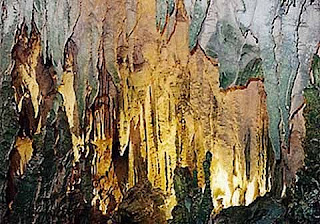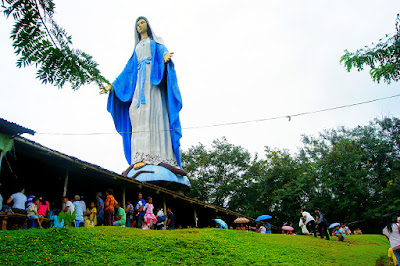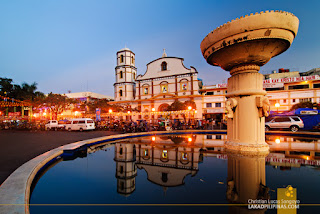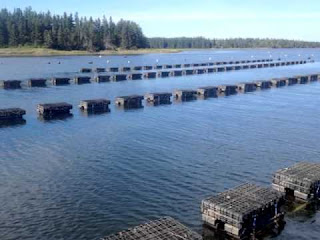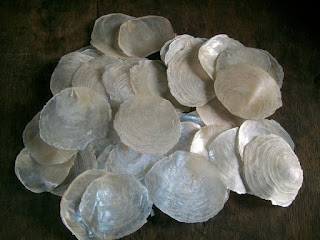Huwebes, Oktubre 6, 2016
PLACES TO VISIT
Capiz is full of caves. Explore the massive chambers of Quipot Cave. You’ll also find wild ducks, birds and deer in the area.
PLACES TO VISIT
If you’re looking for a relaxing walk by the shore, head to Baybay Beach. It’s a modest beach with gray sand. But delicious seafood dishes are sold along the shoreline. Watch the local skimboarders by sunset.
PLACES TO VISIT
Another religious site is Agtalin Shrine, nestled on top of a hill at Brgy. Dulangan, Pilar. Its 80-foot statue of the Blessed Virgin Mary is one of the tallest religious icons in the country.
PLACES TO VISIT
The Our Lady of Immaculate Conception Cathedral, standing proudly beside the city plaza, is one of the oldest churches in Panay Island. Dumalag Church was constructed out of yellow sandstone has a cross-shaped interior, and has a five-storey belfry housing five bells of different sizes.
PLACES TO VISIT
Green mussels abound in the waters of Sapian. Visit the Mussel Farm, where hundreds of bamboo stilts rise from briny waters
PLACES TO VISIT
The area is proud of its capiz shells that the locals call pi-os. Capiz shell products are everywhere.
FESTIVALS
Saot Capiz - A cultural presentation - The First Capiz Dance Season held every Saturday at the Capiz Provincial Park, Roxas City.
Sinadya sa Halaran - Is a merging of the Roxas City Fiesta "Sinadya" and the Province celebration of "Halaran". "Sinadya sa Halaran" is a commemoration of the feast of the patroness of Roxas City which is the Immaculate Conception and a thanksgiving. It literally means "Joy in Sharing and Thanksgiving". Rituals and festivities include fireworks, grand parades, fluvial processions, fair and food festivals, street dancing, and exhibits.
Pangahaw Festival - A thanksgiving for a bountiful harvest by the Indigenous Peoples of Jamindan.
Guyum-Guyuman Festival - "Caguyuman" the old name of Pontevedra, meaning anthill, a name distinct for ants' house was once a part of the municipality of Pan-ay mainly because of its abundant natural resources both from the coastal and upland areas. People from the nearby municipalities of Panay, Panitan, Maayon and President Roxas, would thrive in the market place like swarm of ants for trading. This rich tradition is now a celebration of life and thanksgiving for all Caguyumanons.
Talahong Festival - Talaba and tahong is very rich in production in these areas. More than a hundred fisherfolk live along the coast. Since Sapian is abundant with seafoods, it was the initiative of the Local Government Unit to organize a Talahong Festival (Talaba-Tahong) every 2nd Friday and 2nd Saturday of May that promotes the local products.
Tagbuan Festival - It was conceptualized during the Pre-Spanish time, wherein there were aetas in the upland barangay.
LANGAUAGES
There are two main local languages: Capiznon and Hiligaynon. Filipino and English are also used and understood as the business languages and are widely spoken as second languages respectively.
Capiznon is concentrated in the province of Capiz in the northeast of Panay. It is a member of the Visayan language family and the people using it are part of the wider Visayan ethnolinguistic group, who constitute the largest Filipino ethnolinguistic group. It is often confused with Hiligaynon or Ilonggo, but it has its own unique vocabulary and accent, as well as a handful of words unique to the language itself.
Capiznon is concentrated in the province of Capiz in the northeast of Panay. It is a member of the Visayan language family and the people using it are part of the wider Visayan ethnolinguistic group, who constitute the largest Filipino ethnolinguistic group. It is often confused with Hiligaynon or Ilonggo, but it has its own unique vocabulary and accent, as well as a handful of words unique to the language itself.
RELIGION
Roman Catholicism remains influential in the lives of most people living in Capiz especially in the fields of politics, education and even in their daily personal decisions. Roman Catholics are predominant with 70 percent[citation needed] adherence, theAglipayan Church has a strong minority with 20 percent[citation needed] while other minorities are Born Again Christians, Iglesia Ni Cristo, Methodists, The Church of Jesus Christ of Latter-day Saints, Baptists, Jehovah's Witnesses, and Seventh-day Adventists among others.
GEOGRAPHY
Capiz covers a total area of 2,594.64 square kilometres (1,001.80 sq mi) [8] occupying the northeastern portion of Panay Island, and is one of the six provinces that compose the Western Visayas region. It comprises 473barangays, 16 municipalities and a city. Roxas City, the provincial capital, is only 45 minutes away by plane from Manila and is within the routes of major shipping lines. The Panay River used to be famous for the great number of crocodiles thriving there. Capiz is bounded by the Mindoro Sea, the Panay, Loctugan and Ivisan rivers
HISTORY
The account of early Spanish explorers about Capiz and its people was traced back in the year 1566 when the Spaniards set foot in the mouth of Banica river. Early settlements were seen in the town of Pan-ay which the town originally called "Bamban" which was changed by the early Spaniards to "Panay", a word which means "mouth of the river." This is also the location of a fortress built by Juan de la Isla in late 1570. The Paseo de Evangelizacion 1566 can be found in the town plaza and was erected through the efforts of Rev. Msgr. Benjamin F. Advincula.
When the Spaniards led by Miguel López de Legazpi came to Panay from Cebu in 1569, they found people with tattoos, and so they called the island Isla de los Pintados.[5] How the island itself came to be called Panay is uncertain. The Aeta called it Aninipay, after a plant that abounded in the island. Legend has it that López de Legazpi and his men, in search of food, exclaimed upon the island, pan hay en esta isla!. They established their first settlement on the island at the mouth of the Banica River and called it Pan-ay. This was the second Spanish settlement in the Philippines, following San Miguel, Cebu. Unknown to many, Calle Revolución in Panay town is the second oldest street in the Philippines after Calle Colon in Cebu City, Central Visayas.
Later in 1569, Captain Diego de Artieda, who was sent by Legazpi, landed in the Town of Panay and proclaimed it as the capital of the province. Later, the Spaniards moved the capital to its present site upon discovering the town of Capiz (not the province, and now Roxas City) which was near the sea and provided docking facilities.
The province was created a separate encomienda and was later organized into a politico-military unit in 1716. The American takeover of the Philippines resulted in the establishment of a civil government in Capiz on April 15, 1901 by virtue of Act 115.[6]
In 1942, the region was occupied by Japanese troops. In 1945, the region was liberated by the joint Filipino and American troops with Capiznon guerrillas.
Capiz and Aklan were united under one province until April 25, 1956, when President Ramon Magsaysay signed into law Republic Act 1414 separating the two entities.[7]
When the Spaniards led by Miguel López de Legazpi came to Panay from Cebu in 1569, they found people with tattoos, and so they called the island Isla de los Pintados.[5] How the island itself came to be called Panay is uncertain. The Aeta called it Aninipay, after a plant that abounded in the island. Legend has it that López de Legazpi and his men, in search of food, exclaimed upon the island, pan hay en esta isla!. They established their first settlement on the island at the mouth of the Banica River and called it Pan-ay. This was the second Spanish settlement in the Philippines, following San Miguel, Cebu. Unknown to many, Calle Revolución in Panay town is the second oldest street in the Philippines after Calle Colon in Cebu City, Central Visayas.
Later in 1569, Captain Diego de Artieda, who was sent by Legazpi, landed in the Town of Panay and proclaimed it as the capital of the province. Later, the Spaniards moved the capital to its present site upon discovering the town of Capiz (not the province, and now Roxas City) which was near the sea and provided docking facilities.
The province was created a separate encomienda and was later organized into a politico-military unit in 1716. The American takeover of the Philippines resulted in the establishment of a civil government in Capiz on April 15, 1901 by virtue of Act 115.[6]
In 1942, the region was occupied by Japanese troops. In 1945, the region was liberated by the joint Filipino and American troops with Capiznon guerrillas.
Capiz and Aklan were united under one province until April 25, 1956, when President Ramon Magsaysay signed into law Republic Act 1414 separating the two entities.[7]
Mag-subscribe sa:
Mga Post (Atom)

